Dysphania ambrosioides
Show of hands – who’s ever heard of epazote? If you’re a fan of southern Mexican or Guatemalan food, you may be familiar with this ingredient, which is comprised of the leaves and stalks of the epazote (eh-puh-ZO-tay) plant.
This plant is considered a weed by some, but proudly cultivated by others who treasure its unusual flavor, described by some as “earthy,” or as having lemony, acidic qualities.
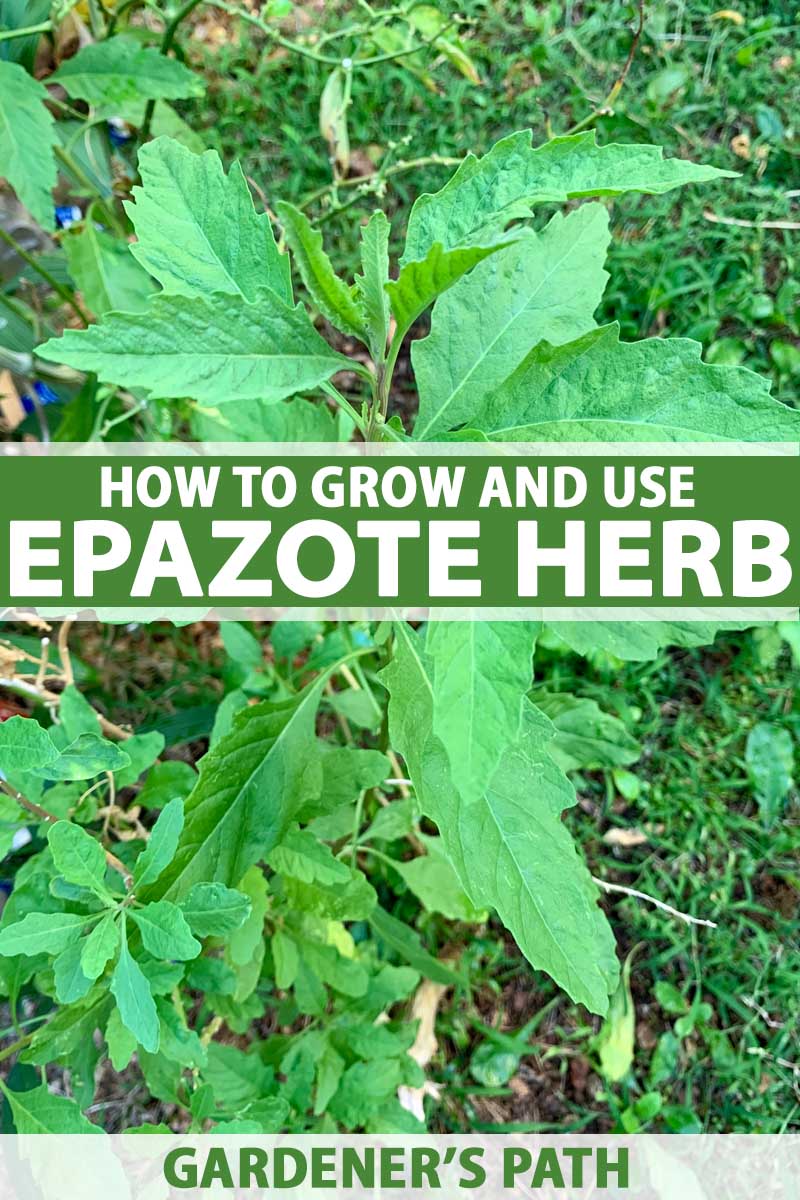
We link to vendors to help you find relevant products. If you buy from one of our links, we may earn a commission.
Other tasters compare it to a stronger version of oregano, anise, fennel, or tarragon. It’s also been called spicy.
What You’ll Learn
What Is Epazote?
You may also see this herb called wormseed (more on the genesis of this nickname in a minute), Jesuit’s tea, or Mexican tea. Botanically, the plant was once known as Chenopodium ambrosioides.
Interestingly, epazote is considered a carminative, well-known for its, ahem, flatulence-reducing properties. One can only assume this is why it is a popular flavoring for bean dishes.
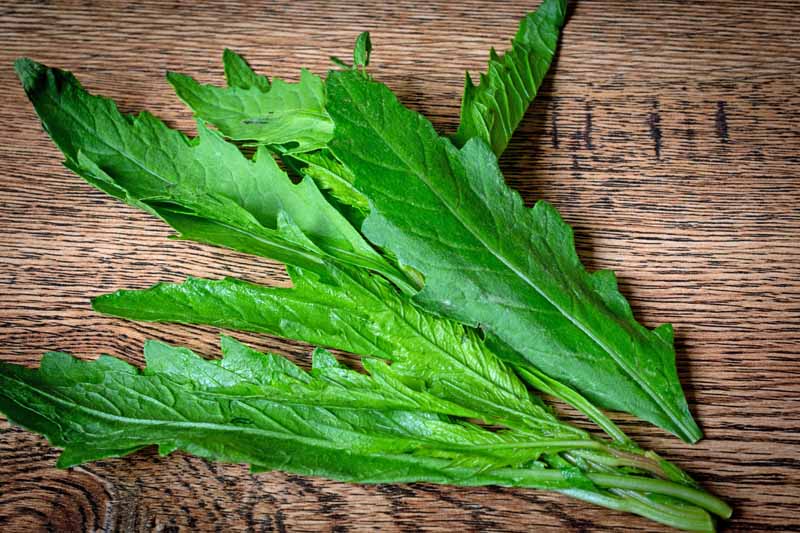
The plant grows to about four feet tall and produces long, serrated leaves that emit a fairly strong, kerosene-like odor. It produces small, pale yellow-greenish flowers.
Gardeners in Zones 4-12 can grow this plant. In the more northern zones, the plant is typically grown as an annual, though it does tolerate a bit of frost, so can be overwintered in warmer climates.
Before we get too far into our exploration of this plant and how to cultivate it, I would be remiss if I didn’t mention that if you were to eat a dump truck full of epazote, you may experience some awful side effects, as it is poisonous in large quantities.
It contains the toxin ascaridole, which can potentially cause deafness, vertigo, paralysis, incontinence, jaundice, sweating, and even death.
So just enjoy it in the occasional taco and discourage young children and pregnant people from consuming the herb.
Cultivation and History
Native to southern Mexico, Central America, and South America, epazote has been used in the cuisines of these areas for centuries. It is believed that the Mayans used it both culinarily and medicinally.
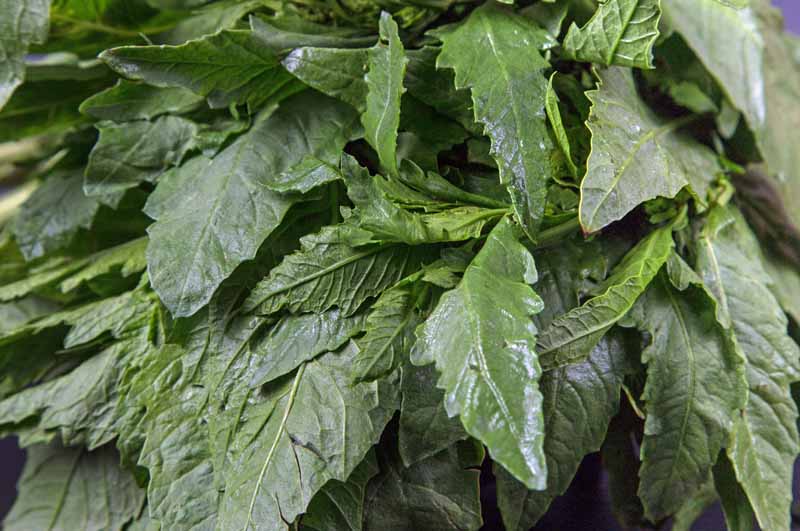
Notably, the herb contains a chemical called ascaridole, which repels intestinal worms. For centuries, people around the world used D. ambrosioides to purge worms from their systems.
Until antiparasitic drugs became available in the 1940s, many thousands of gallons of Baltimore Oil, also known as wormseed oil, were produced as a household remedy for hookworm in pets, livestock, and humans. In the 1930s and ‘40s, more than 240 farmers in Carroll County, northwest of Baltimore, grew wormseed.
Propagation
You can sow seeds indoors in early spring, or sow directly outdoors when soil temperatures have reached 70°F. If starting indoors, applying heat to the bottom of your seed trays will speed germination.
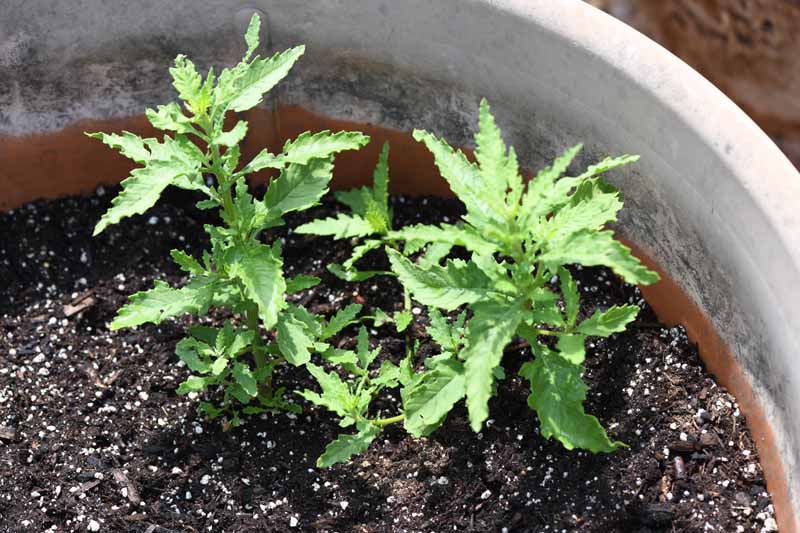
Soak seeds in water for 24 hours, and then lightly press seeds into the soil and add a scant layer of dirt on top. Keep the soil moist until germination occurs. Seeds should sprout in seven to 14 days – the germination rate of this plant is pretty good.
Thin outdoor-sown plants to six inches apart.
In order to have a continual supply of young leaves (more on this below), you might want to make successive sowings of this herb every two to three weeks.
How to Grow
Wormseed grows best in full sun. It is not particular about the soil in which it grows, though it does need a location that drains well.
If you really want to, you can enrich the soil with a wee bit of organic matter, but any additional fertilizer will result in less flavorful leaves.
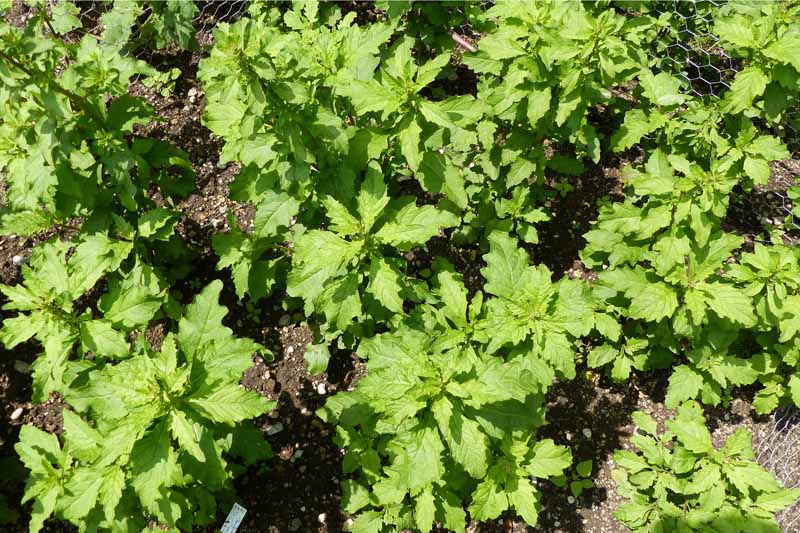
The plant prefers dry weather with a medium amount of water; it can tolerate some drought, but it really does better with regular watering.
Because of its attractiveness to predatory wasps and flies, it is sometimes intentionally grown near plants that are infested with insects that these beneficial wasps and flies like to dine on.
Pruning will encourage more branching and therefore more leafing, particularly if you lop off the center stem. As with basil, snip off emerging flower spikes, too, to encourage more leafing.
Near the end of the growing season, you can let the plant go to seed and collect the seeds to sow in the spring.
Simply rub the seed stalks gently between your fingers, collecting the seeds in a container beneath. Store the seeds in sealed container in a cool, try place.
Growing Tips
- Plant in well-draining soil in full sun
- Medium water requirements
- Growing in containers is recommended – epazote reseeds liberally and can “take over” an area fairly quickly
Where to Buy?
You’ll find a packet of 50 seeds available from Frozen Seed Capsules via Amazon.

Your seeds will arrive in an air- and water-tight glass vial that’s filled with silica beads and organic cotton, which absorb moisture and offer a good long-term storage option.
Managing Pests and Disease
While epazote’s strong scent wards off many potential pests, you may see thrips, which can be treated with insecticidal soap.
Thrips are a pain in the neck, not only for their propensity to suck essential fluids out of plants, but also for their ability to transfer viruses from plant to plant.
Epazote is considered a “host reservoir” for some viruses, including lettuce mosaic virus and tomato spotted wilt virus. This means the plant is infected with a virus but may or may not show symptoms.
Viruses typically show up as discoloration on the plant’s leaves. There is no treatment for viruses in plants; if the disease is severe, you will have to pull up and destroy the plants.
Harvesting
You can harvest epazote leaves about 55 days after the seeds are sown. Simply cut or tear young leaves from the center stem of plants.
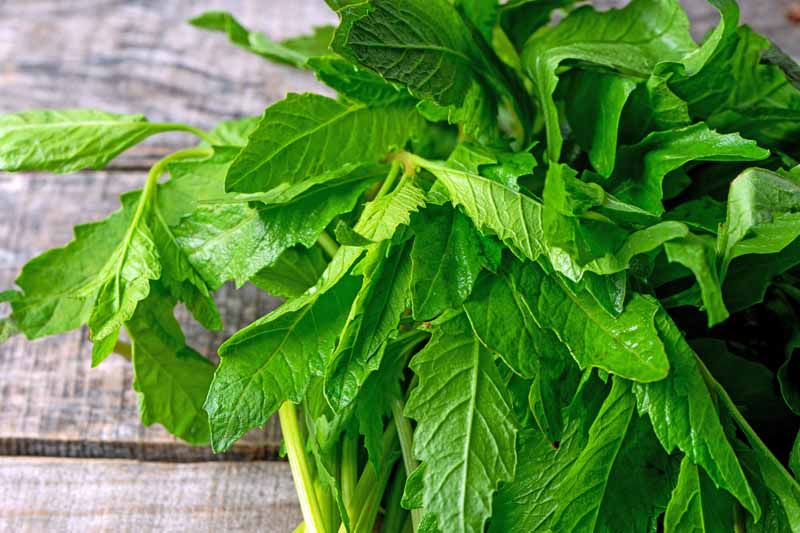
You can harvest and eat the older leaves, too, but they have a stronger flavor and should be used in small amounts. The younger leaves have a milder, yet richer, flavor.
If you’re harvesting leaves in advance of when you need them, wrap them in a damp paper towel, place in a zip-top bag, and store in the refrigerator, where they will keep for about three weeks. Alternatively, you can store stems upright in a glass of water in the fridge.
Preserving
Epazote leaves can be dried and used later.
If you’re bumping up against a blizzard and want to get your plants out of the ground before they’re buried in snow, pull the entire plant and hang it upside down in a cool, dust-free room. Make sure there’s plenty of room between each stalk, with adequate airflow to prevent mold.

Check them after seven to 10 days; if the leaves appear dry and they crumble easily, they are ready for storage. Take your stalks down, remove the leaves, and discard the stems.
Store the leaves in a jar with a tight-fitting lid in a cool, dark place. Remove and crumble leaves as you need them.
Get more tips on drying and storing herbs here.
Culinary Uses
Epazote leaves are sometimes chopped up and used as you would an herb; other times whole leaves are used in cooking. For example, in Mexico’s state of Oaxaca, fresh epazote leaves are often used in cheese quesadillas.
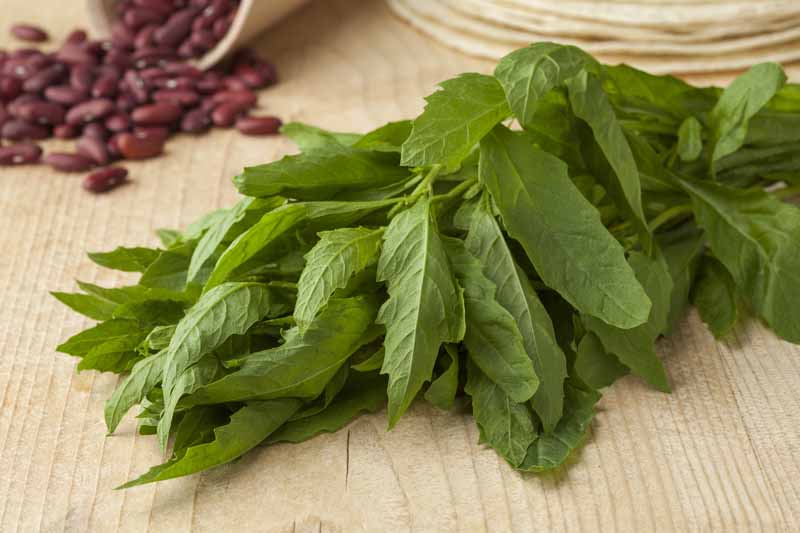
In addition to its use in bean dishes, it also makes a flavorful addition to soups, egg dishes, corn dishes, and mole sauces. It’s also used around the world to make tea.
This plant is a good source of vitamins A, B6, C, and D, as well as dietary fiber, iron, and calcium. But keep in mind that it should only be consumed in small quantities, and as such, will not provide a significant amount of any of these nutrients.
Quick Reference Growing Chart
| Plant Type: | Herb, annual in colder climates, perennial in warmer areas | Water Needs: | Moderate |
| Native to: | Mexico and Central and South America | Maintenance: | Low |
| Hardiness (USDA Zone): | 4-12 | Soil Type: | All |
| Season: | Spring, summer, fall | Soil pH: | 5.2 to 8.3 |
| Exposure: | Full sun | Soil Drainage: | Well-draining |
| Time to Maturity: | 55 days | Companion Planting: | Artemisia, lavender, cotton |
| Spacing: | 6 inches | Attracts: | Predatory wasps and flies |
| Planting Depth: | A dusting of soil to cover | Family: | Amaranthaceae |
| Height: | 4 feet | Subfamily: | Chenopodioideae |
| Spread: | 1 1/2 feet | Genus: | Dysphania |
| Tolerance: | Various soil types | Species: | ambrosioides |
| Common Pests: | Flea beetles, cabbage loopers, root nematodes, slugs, birds | Common Disease: | Downy mildew, leaf blight |
Invite the Neighbors Over for a Big Pot o’ Beans
If you want to grow something that perhaps no one else on your block is growing, epazote may be just the plant.

It’s very easy to grow, and indeed is so amenable to a variety of conditions that it has weedy tendencies.
If you can keep it contained, however, and enjoy cooking and eating Mexican and Central American cuisines, how wonderful would it be to have a fresh supply of this tasty herb?
Would you like to expand your herb garden even more? Check out these articles:
- How to Plant and Grow Mexican Oregano
- Grow Common Sage, A Mediterranean Culinary Staple
- Love It or Hate It, Cilantro Is Easy to Grow
Ask the Experts, LLC. ALL RIGHTS RESERVED. Uncredited photos: Shutterstock.
The staff at Gardener’s Path are not medical professionals and this article should not be construed as medical advice intended to assess, diagnose, prescribe, or promise cure. Gardener’s Path and Ask the Experts, LLC assume no liability for the use or misuse of the material presented above. Always consult with a medical professional before changing your diet or using plant-based remedies or supplements for health and wellness.
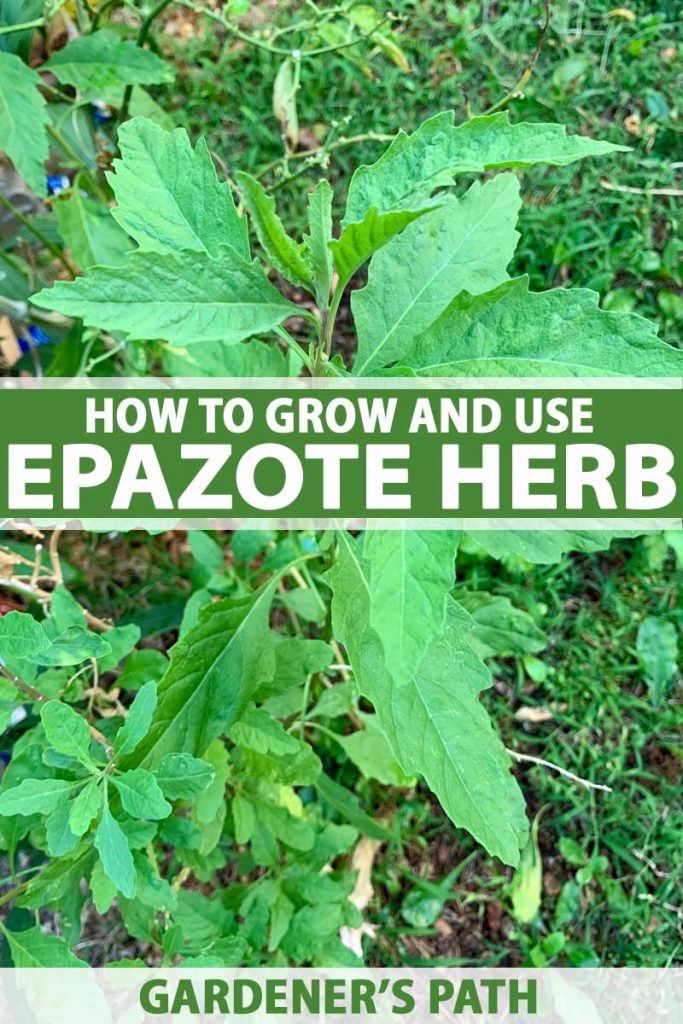
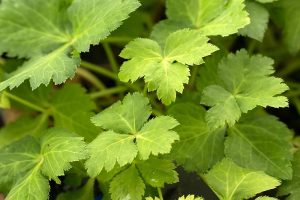
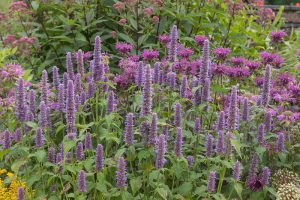

Detailed and thorough. Thanks
Why can’t you say Native to North America? You do know Mexico is in North America right?
I suppose the writer wanted to be more specific regarding the native range of this plant, though I cannot say for sure. You are of course correct- I assume most people are aware that Mexico as well as Canada and the United States are in fact all part of North America, though these countries span a wide range of different climates. Others could probably use a reminder from time to time… Thanks for your input!
Hello.
I’m local, and have heard epazote grows wild around Lake Travis.
Do you have any idea where?
Thanks.
Thanks for your message, Scott. I’m not sure about the Lake Travis area, but I was able to find this map from the USDA Plants Database showing distribution throughout Texas by county. You may want to contact the Lower Colorado River Authority or the Travis County Parks System to find out more about local plant life in the area, as well as any local regulations related to foraging if that’s what you intend to do.